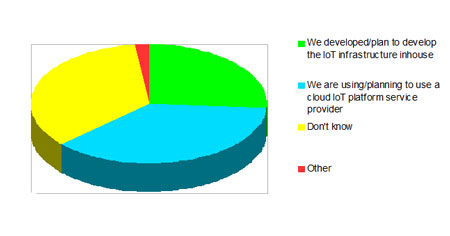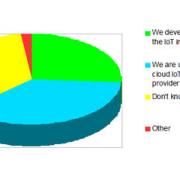The Internet of Things (IoT) infrastructure provides the foundational components needed to support connected products and services, as well as their integration with enterprise systems. These include: mechanisms used for identification and location of sensor-enabled/connected objects (machines, appliances, tools, etc.); transport of data between objects; control of collections of heterogeneous devices and their integration; and data extraction, storage, and management capabilities for processing sensor and other machine data generated by connected products and services. Additionally, IoT infrastructure components include customer-facing (end-user) applications and the operational applications used for deploying and managing connected systems.
Organizations have several choices for implementing IoT infrastructure: they can build it inhouse, or they can use a cloud-based platform and service offered by commercial providers (e.g., AGT, Axeda, AT&T, GE, Google, Microsoft).
A recent Cutter Consortium survey that asked 80 organizations (worldwide) about their IoT plans helps provide some insight into how organizations are going about implementing the infrastructure to support their IoT initiatives.
As shown in Figure 1, our findings indicate that currently more organizations are opting to go with a commercial cloud-based IoT platform to meet their IoT infrastructure needs than are choosing to build such applications inhouse. This seems to makes sense, being that IoT infrastructure development represents a fairly complex undertaking. That said, there are still good reasons why organizations are choosing to develop their IoT infrastructure inhouse. These tend to center around the usual concerns regarding security and availability with cloud platforms. In addition, some companies simply do not want any other entity coming between them and their
customers.

The finding that more than one-third of respondents were unable to say which approach their organizations would use to implement their IoT infrastructure indicates to me just how new the IoT concept still is, and that many organizations have yet to start planning their IoT initiatives in detail.
Over the next 12-18 months, I think we can expect to see the use of commercial cloud IoT solutions pick up considerably as more organizations move beyond the investigative and planning stages, and start getting serious about implementing their IoT initiatives.
Finally, I'd like to get your opinion about IoT architecture development and the use of commercial solutions and cloud platforms in general. You can comment online, email me at chall@cutter.com, or call +1 510 848 7417 with your comments.



